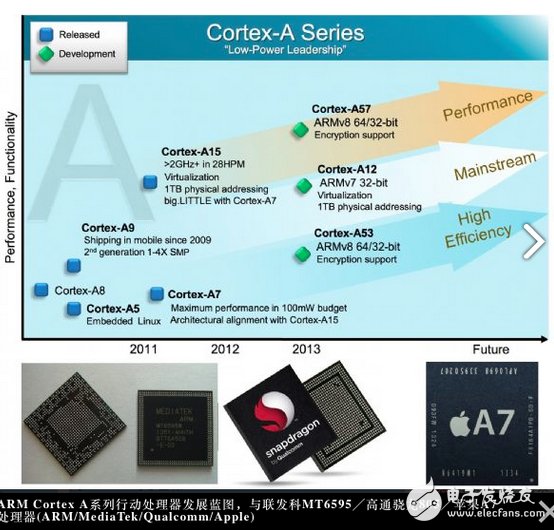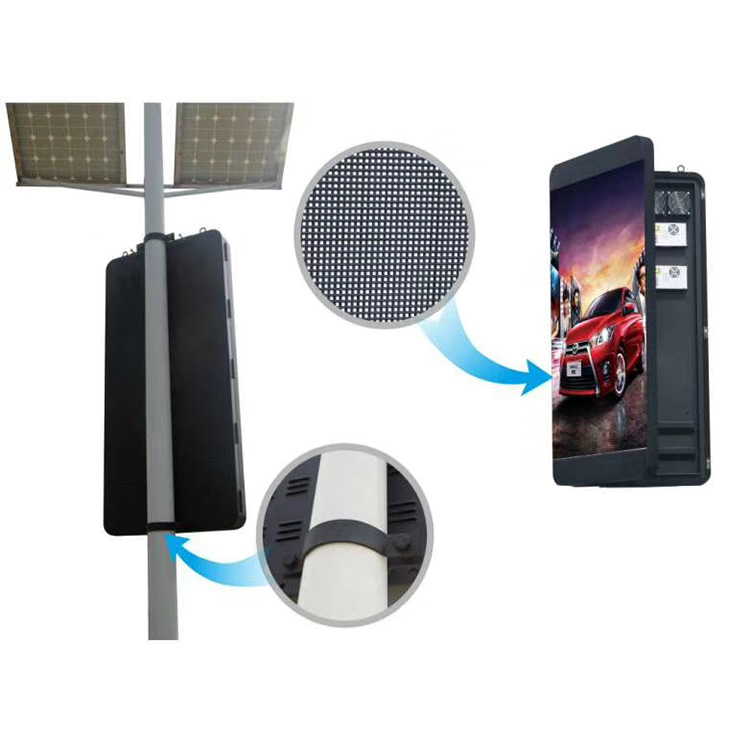Regardless of the Apple iOS+ARM or Google Android+ARM software and hardware platform, mobile processor chip vendors offer ARM Cortex, with shipments of smart phones, tablets and networking devices surpassing 1.4 billion. Intel Atom or other architecture, multi-core, 64-bit, and a variety of technical solutions with OS platforms other than Android, to help smart phone brands and white card makers, find differences in the ever-changing mobile computing market Product segmentation and market share.
ARM mobile platform pressure Wintel
With the ARM Cortex architecture with flexible IP licensing and low power consumption, the launch of the Apple iPhone in 2007, the launch of the iPad tablet in 2010, and the rise of mobile devices such as smartphones and tablets with the Android OS platform, In 2013, the shipments ranged from 1.3 to 1.4 billion units, which is more than four times the annual shipment of 300 million Wintel x86 NB/DT/AIOs; ARM has smart phones, tablets, smart TVs, set-top boxes, etc. 90 to 95% of the market share, breaking the 30-year Wintel double-occupancy situation that emerged from the 1981 PC, Microsoft Windows OS plus Intel (Intel) x86 processor.


ASUS builds FonePad, ZenFone tablet/smartphone (Intel/ASUS) with CloverTrail+
With the improved resolution of the panel, the improvement of mobile phone pixels, the huge data (Big Data) and the move to 4G LTE mobile communication, the huge computing and data streaming has led to the mobile processor's mobile processor computing and graphics performance. Currently, MediaTek, Qualcomm, Broadcom, NVIDIA, and Apple, Samsung, and others are based on the ARM Cortex A architecture. The 28-nm HKMG (High K Metal Gate) process developed a dual-core, quad-core or even eight-core, 64-bit mobile processor. In mainland China, Allwinner and Rockchip have launched single/dual/quad core ARM architecture processors to focus on the low-cost smartphone market with a price range of only $150 to $200.
MediaTek has launched the eight-core ARM Cortex A7 mobile processor MT6592 since last year (2013), which only supported 3.75G HSDPA; in February 2014, it launched the 8x Cortex A7+4x Cortex A15 eight-core, support. 4G LTE MT6595 processor.
Qualcomm is the Snapdragon 805 with ╱Image, Memory, and Communication Bandwidth enhancements after Snapdragon 800. It features a 2.5GHz, quad-core Krait 450 architecture with Adreno 420 GPU and quad-channel LP-DDR3 memory control. Device, the transmission bandwidth is greatly increased to 25.6GB / s, graphics performance increased by 40% and support 4K UHD resolution screen output; also supports 4G LTE R9 Category 4 (150Mbps) transmission protocol, regardless of mobile networking, web browsing or streaming video It has better performance in playback and supports USB 3.0 to meet the needs of flagship mobile phones for high-speed transmission.
At present, smart phones have more than 3GB of RAM built in, but 32bit processors have an upper limit of 4GB memory. Following ARM's announcement of its 64-bit ARMv8 architecture Cortex-A57 and A53 processor plans, Apple is the first to use a 64-bit A7 processor with a dual-core 1.3GHz self-modifying 64bit Swift core + quad-core PowerVR G6430 GPU SoC design. It was commissioned by Samsung to manufacture on 28nm HKMG process. Its 64-bit architecture challenges today's desktop and even server-class computing architectures, and it has also ignited the panic of smart phone upstream chipmakers and manufacturers. Samsung also announced plans for its 64-bit Exynos processor. Qualcomm followed up with the announcement of the second quarter of 2014 to release the 64-bit application processor supporting Snapdragon 410 for 4G LTE. In addition to the Apple iPhone5S, it is expected that in the second half of this year, there will be other flagship smart phones with 4GB RAM and 64bit ARM architecture.
Intel moves closer to Android to fight ARM with Atom
At present, Intel (Intel) adopts the strategy of matching Google Android OS in the mobile processor blueprint planning of smart phones. The high-performance block has a 32nm Intel Atom Z2480 (Medfield) with a clock speed of 2GHz and supports the HSPA+ protocol. In February 2013, the Atom Z2580 (Clover Trail+) adopts a dual-core four-wire design; In part, the Intel Atom Z2420 (Lexington) is the same 32nm process, clocked at 1.2GHz and supports the HSPA+ protocol.
In September 2013, the Atom processor (Bay Trail) with 22nm ╱ three-gate transistor (Tri-gate) process and true quad-core design was launched. The mobile phone ╱ tablet platform code is Valleyview, BayTrail-T, and Atom CPU. +PCH+GPU 3-in-1 SoC single-chip design, Bay Trail-T-based tablet is scheduled to go on sale in 2013, but there is no further timetable for the Smartphone of the Valleyview platform. Intel also announced that it will propose a 64bit Atom mobile processor platform in 2014. It is expected that there will be further technical and specification disclosures in the Intel Developer Forum in April 2014.
On the eve of the opening of CES 2014, ASUS launched the ZenFone 4/5/6 series of smart phones with Intel Atom Z2520/2580 dual-core four-wire processor. The ZenFone 4 mobile phone with 1.2GHz Atom Z2520 and 4-inch screen is only available. $99, the main low-cost market is cheaper than the red rice machine; ZenFone 5&6 are both 2GHz Atom Z2580, priced at $149,199.
Other architecture of the action processor
In the past, in the era of feature phones and PDA digital assistants, Motorola or later Freescale's DragonBall processor was once popular, with the clock jumping from 33 to 66 MHz, but in the face of the PocketPC camp. StrongARM and Intel XScale processors quickly leap to 524MHz and gradually lost in the field of quasi-smart phones. Even Freescale has adopted the ARM-licensed IP and launched the i.MX series of mobile processors.
The MIPS processor division, which was acquired by ImaginaTIon, was founded by Dr. John L. Hennessy, president of Stanford University, and is a representative of the RISC's streamlined instruction set architecture. MIPS processors are still widely used in embedded devices and Netcom devices, but they are hard to find in the field of tablet computers and smart phones. MIPS had exhibited a smart phone reference platform designed by 520MHz MIPS processor in Computex in June 2011, but it was not favored.
In 2012, MIPS announced the launch of the high-end 1~6-core proApTIv, mid-range 1~4 core interApTIv and the entry-level 1~2 core+DSP function microApTIv microprocessor for the Android mobile platform. In May of that year, it was fully supported by Google's official Android v4.0 NDK, and 85% of Apps could be implemented on MIPS-based devices. However, in December 2011 alone, the Chinese white card manufacturer cooperated to launch a 1GHz Android 4.0 tablet computer with only US$99. The promotion was not smooth, resulting in the acquisition by Imagination in November 2012.
Microsoft Windows Phone and Firefox, Sailfish after the hard pursuit
The growth of the ARM camp has impacted revenues for Wintel x86 CPU vendors Intel (Intel) and AMD (AMD). For Taiwan DT/NB vendors that have relied on Wintel architecture, there is also a greater impact and gross profit decline. Happening. Based on the concept of Second Source, brand factories and ODM/OEM factories have developed, acquired or sought other smartphone technologies with open source technologies.
Microsoft has launched the Windows RT operating system of WOA (Windows On ARM), but unfortunately it has not been promoted on ARM-based tablets. Even its own Surface RT tablet and Surface Pro (x86 architecture) tablet have lost millions of units worth 900 million. The fate of the dollar's inventory depreciation. However, in 2011, Nokia won the competition, and in 2013, with the purchase of 7.2 billion US dollars, the market share of smart phone OS has finally rebounded, but it is still not enough to shake the status of Android and iOS. It is reported that Nokia will release at least one Nokia X A110 (or even more, unconfirmed) Android smartphone at MWC 2014.
Samsung has worked with Intel on the Tizen OS project and finalized the launch of the first Tizen OS phone in Japan with NTT Docomo in Japan, but was announced by NTT Docomo here; LG bought the HP acquisition and then Thrown webOS (formerly Palm OS) for smart TV; in addition to the Android OS, the mobile phone also tried to use Mozilla's Firefox OS.
Jolla Ltd, founded by Nokia's departing employees, officially released Sailfish OS, which included features such as Gesture on July 6, 2012. In November 2013, the first Sailfish OS smart phone with the Finnish telecoms DNA brand was officially launched.
Shanghai Lianyi Network Communication Technology and the Institute of Software, Chinese Academy of Sciences, jointly released the COS (China Operating System) autonomous operating system in Beijing on January 15, 2014, which can be applied to PC, smart phones, tablets, STBs and smart home appliances. . The appearance of COS is similar to that of Microsoft Windows Phone, and the image design of the upper and lower ends is close to Android. The industry has rumored that Taiwan HTC (HTC) has participated in the research and development of COS, but HTC and Shanghai Alliance Network did not comment on this speculation.
It is predicted that the global market share of Android OS will remain at 6 to 70% in 2014, and the market share in North America will exceed 50%. The market share in mainland China will depend on the promotion of the so-called COS platform; Apple iOS Market share is still between 18 and 24%, more than 40% in the North American market; Microsoft Windows Phone accounted for more than 5%, accounting for nearly 10% in Europe; and Firefox OS, Sailfish OS and COS, etc. started late There is currently no obvious market share.
With the continuous upgrading of terminal consumption in smart city, LED lamp pole screen, as an indispensable information carrier in smart street lamp system, is welcomed by many media companies and government agencies.
LED light pole screen is mainly installed on the street light pole on both sides of the highway and the street. Because the light pole display screen has the characteristics of synchronous reception and synchronous playback, no matter how far the car goes, it is always accompanied by the HD light pole display screen. The lamp post display screen not only has unique advantages in road guidance, road condition broadcast, information release, advertisement promotion, etc., but also plays a considerable role in alleviating the fatigue of automobile drivers on the highway.

LED intelligent light pole screen can quickly get the favor of consumers, which comes from the following natural advantages:
1. It has multiple control modes of WiFi / 3G / 4G / network cable, and the Internet can update the display content of light pole screen remotely, which is simple, fast and convenient
2. The high-definition intelligent lamp pole screen adopts the best three in one technology of waterproof and UV resistant SMD in the industry.
3. The intelligent LED light pole screen presents a full outdoor high-definition and high-definition picture. It uses RGB deep gray processing to support the point by point annotation function to maintain the consistency of advertising content and color brightness. Let the color of the advertisement more gorgeous, the picture quality more high-definition exquisite.
4. The lamp pole screen body is equipped with fixed stiffener plate, which can be tensile, shockproof, self cooling, and extend the service life;
5. The high-definition intelligent lamp pole screen has the protection grade of IP65 and is not afraid of any bad weather.

Lamp Post Pole LED Screen for Advertising,Advertising Lamp Standard LED Display,Street light pole led display,Double-edged led Lamp Post
Shenzhen Vision Display Technology Co,.LTD , https://www.ledvdi.com
